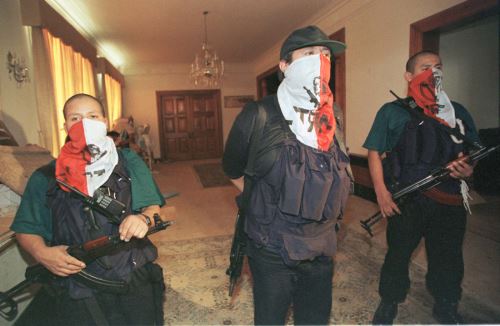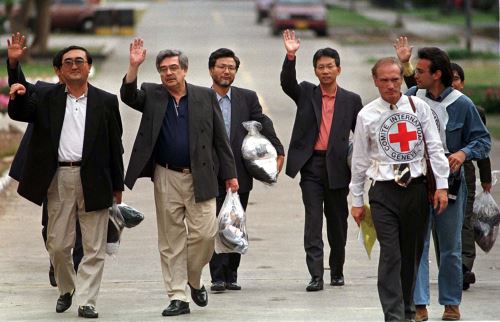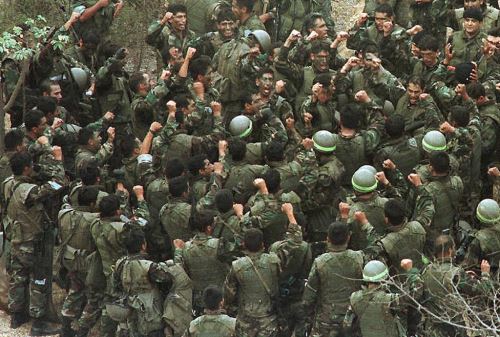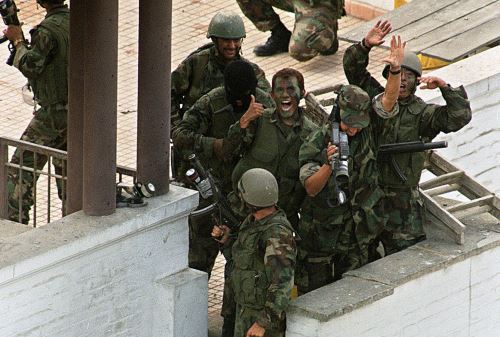On April 22, 1997, the Chavin de Huantar Operation was carried out, the successful military operation that culminated in the rescue of 72 hostages from terrorists belonging to the Tupac Amaru Revolutionary Movement (MRTA). In this article, we will recall everything that happened during those weeks.
The hostages were freed thanks to the action of the Chavin de Huantar Commando Unit after 126 days of captivity in the Japanese ambassador's residence, then situated in Lima's San Isidro district.

On the night of December 17, 1996, 14 subversives led by Nestor Cerpa Cartolini entered the residence through a breach in a neighboring house.
A reception was being held there to celebrate the birthday of Emperor Akihito, attended by more than 700 guests, including authorities, political figures, diplomats, military commanders, and business leaders.
The MRTA members, who were demanding the release of their imprisoned fellow terrorists, let several of the attendees go within the first hours.

Upon learning of the incident, then-President Alberto Fujimori convened an emergency cabinet and appointed Education Minister Domingo Palermo as the government's representative for negotiations, which would extend over several weeks and also included representatives from the Catholic Church and the International Committee of the Red Cross (ICRC).
The release of hostages occurred gradually by the end of January, leaving only 72 people, including then Foreign Affairs Minister Francisco Tudela, Japanese Ambassador to Peru Morihisa Aoki, Admiral Luis Giampietri, and others of both Peruvian and Japanese nationality.
Operational plan
Meanwhile, the Joint Command of the Armed Forces assigned the head of the Army's Special Forces Division, Army General Augusto Jaime Patiño, to develop the operational plan to secure the release of the hostages.
Under Patiño's orders, Army General Jose Williams Zapata —currently a Congressman of the Republic— designed the plan called 'Nipon 96' and later led the 143 courageous commandos who carried out the historic military feat after negotiations had been exhausted.

For this purpose, various actions were undertaken within the framework of the plan, such as the construction of underground tunnels to enter the residence. This explains the name "Chavin de Huantar," in reference to the Chavin Culture archaeological site, which also featured such a tunnel system.
A replica of the Japanese ambassador's residence was even built to rehearse the military actions.
Today, this structure, located in Lima's Chorrillos district, is an Army museum where these events are commemorated.
The day of the operation
The successful operation began on April 22, 1997, at 3:23 p.m. (local time), with a powerful explosion in the residence, where the MRTA terrorists were playing a small game of soccer.
The explosion created a breach through which the first group of commandos entered, followed by several more through other access points, taking control of the location.
Thanks to this action, the 72 hostages were freed. Unfortunately, one of them, magistrate Carlos Giusti, did not survive due to a fatal gunshot wound to the leg.
Colonel Juan Valer and Captain Raul Jimenez also died in action, and their memory is honored every year in remembrance of these events.
The Chavin de Huantar Operation is regarded as one of the most successful military hostage rescue operations in the world.
The brave commandos who accomplished this feat have received multiple decorations, such as being declared "Heroes of Democracy" in 2017.
Additionally, in 2023, the Defender of Democracy Medal was awarded to police non-commissioned officers and miners who also took part in the operation.

(END) MCA/CVC/JMP/MVB
Published: 4/22/2025